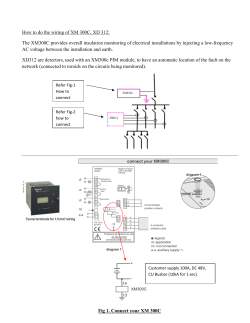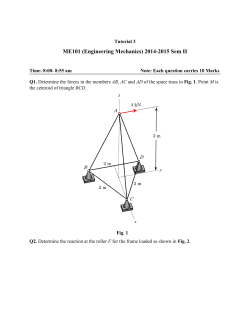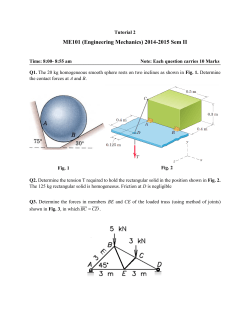
DYNAMIC BEHAVIOR OF THE Y-X---Ï INTERACTIONS (X, Y = F, Cl
ICHAC-XI, International Conference on Heteroatom Chemistry Caen (France), 14-19 June 2015 DYNAMIC BEHAVIOR OF THE Y-X---π INTERACTIONS (X, Y = F, Cl, Br, AND I) IN BENZENE π SYSTEM, ELUCIDATED BY AIM-DFA Yuji Sugibayashi, Satoko Hayashi, and Waro Nakanishi* Department of Material Science and Chemistry, Faculty of Systems Engineering, Wakayama University, 930 Sakaedani, Wakayama, 640-8510 Japan: nakanisi@sys.wakayama-u.ac.jp Halogen bonds/interactions of the Y-X---π type are one of basic type of interactions in chemistry. The type of interactions must have wide variety with the structural changes of the π systems, the planar and bowl-type π systems, for example. Here, we clarified the dynamic and static behavior of the Y-X-∗-π(C6H6) interactions (X, Y = Cl, Br,1 and I), as a first step to clarify the whole picture of the interactions, where -∗emphasize the presence of bond critical points Y betqeen Y-X and benzene π system. AIM-DFA X (atoms-in-molecules dual functional analysis)2 is applied to the interactions, which we proposed recently. Fig. 1 shows molecular graph for F-F-∗- Y-X-∗-π inY-X---C6H6 (X, Y = F, Cl, Br, and I) Hb(rc) (au) π(C6H6), where an F atom in F2 is connected to a BCP of C-∗-C in C6H6 through a bond path. 0.0020 Molecular graphs of other halogen adducts are similar to that in Fig. 1, although those for X-F-∗π(C6H6) (X = Cl, Br, and I) are something 0.0015 0.0010 different. Fig. 2 shows the AIM-DFA plots for YX-∗-π(C6H6) (X, Y = Cl, Br, and I). The treatment 0.0005 clarified that X-Y of F-F forms typical vdW adduct, whereas X-Y of I-F gives typical HB, although the F-I-∗-π(C6H6) interaction contains no 0.004 0.006 Hb(rc) – Vb(rc)/2 (au) 0.008 Fig. 2 AIM-DFA plots for π (C6H6)-∗-X-Y. X-Y are shown in the figure. covalency. Other interactions are classifed as vdW-type, although basis set system affect much on the behavior. Datails will be didcused in the presentation. 1 2 Vasilyev, A. V.; Lindeman, S. V.; Kochi, J. K. New. J. Chem. 2002, 26, 582. Nakanishi, W.; Hayashi, S.; Narahara, K. J. Phys. Chem. A 2009, 113, 10050; 2010, 114, 7423.
© Copyright 2025









